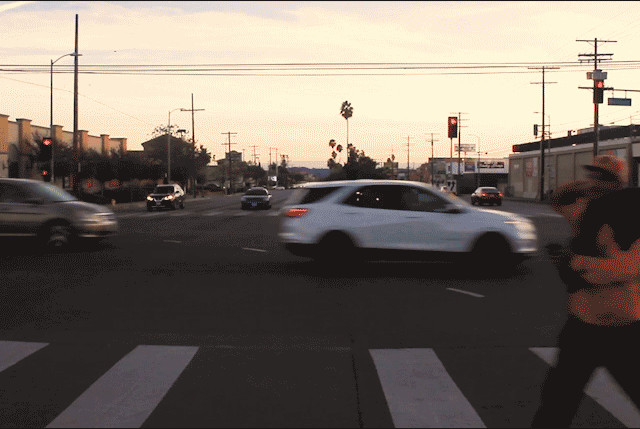


SHERMAN OAKS — Conor Lynch, a junior at Notre Dame High School, died on his way to cross-country practice.
Lynch was attempting to cross a five-lane road when he was hit by a maroon SUV. He is one of the over 900 pedestrians killed in Los Angeles over the last ten years. Since the start of 2018, there have been 97 pedestrians killed on the city’s streets.
“He was my oldest son,” said his mother, Jeri Lynch. “My other sons are graduating from college and getting into the workforce ... he didn’t get to do that.”
Since her son’s death in 2010, Lynch has become an advocate for safer streets in Los Angeles.
“These are deaths or injuries that did not have to happen,” she said.
This idea was at the core of Mayor Eric Garcetti’s Vision Zero initiative. Launched in 2015, he had two goals: reduce citywide traffic fatalities 20 percent by 2017 (with a focus on pedestrian deaths involving older adults and children) and reach zero traffic fatalities by 2025.
At the launch of Vision Zero, road changes were planned for high-risk intersections, with a priority for low-income neighborhoods and areas with high rates of pedestrian, cyclist, child and senior deaths.
Three years later, the city is still a long way from zero, and new policy changes are moving the priority away from pedestrian deaths. Starting in 2019, improvements will be based solely on number of serious injuries and deaths, without weighing for factors like income and pedestrian fatalities.
The city council is shifting focus, even though Los Angeles failed to reach its 2017 goal. The most recent preliminary data provided by the Mayor’s office shows a 45 percent increase in year-to-date pedestrian deaths since 2015.
According to Arce, the policy director for councilwoman Nury Martinez, Vision Zero is not the top priority.
“The council needs to be serious about funding the program,” Arce said. “Homelessness is really the priority for the council right now.”
Last year the city allocated $27 million to the program, compared to $176 million toward homelessness-related measures. The city has increased the Vision Zero budget to $37 million this year, according to the mayor’s office statement to Curbed.
Deborah Murphy, an urban planner who’s worked in Los Angeles for over 30 years, says there needs to be a broader base of support for Vision Zero in addition to funding.
“The only department who’s really focused on this is Department of Transportation,” Murphy said. She believes the departments of Street Lighting, Engineering and Street Services need to be involved as well.
“It needs to be a more holistic approach to the streets,” Murphy said.
The Bureau of Engineering, which is involved in more comprehensive road changes, declined to comment for this story, deferring all questions to the Department of Transportation.
LADOT has done a few major road reconstructions, including four scramble crosswalks, which allow pedestrians to cross in all directions. But the majority of projects have been smaller measures, like speed feedback signs and reminders to watch for pedestrians.
“You see lots of speed feedback signs and paddles that tell people to yield to someone crossing the crosswalk ... that should be basic,” Emilia Crotty, the executive director of Los Angeles Walks, said. “To us, Vision Zero should be life-altering, they should be transformative projects along with the bread and butter everyday items that cities should be putting down as standard practice.”
This is particularly true for the San Fernando Valley, which refers to 34 Los Angeles neighborhoods including Sherman Oaks, Burbank, and Sylmar. This region has seen steadily rising pedestrian death rates over the past ten years, with 33 pedestrians killed in 2017.
Part of the valley is within the 6th council district, where Arcelia Arce is policy director. She said the area was constructed for cars, not pedestrians.
“I think for the valley, you have to slowly introduce changes like this because it is a different mindset out there with cars, people wanting their cars,” Arce said. “The valley was built with long and wide boulevards.”